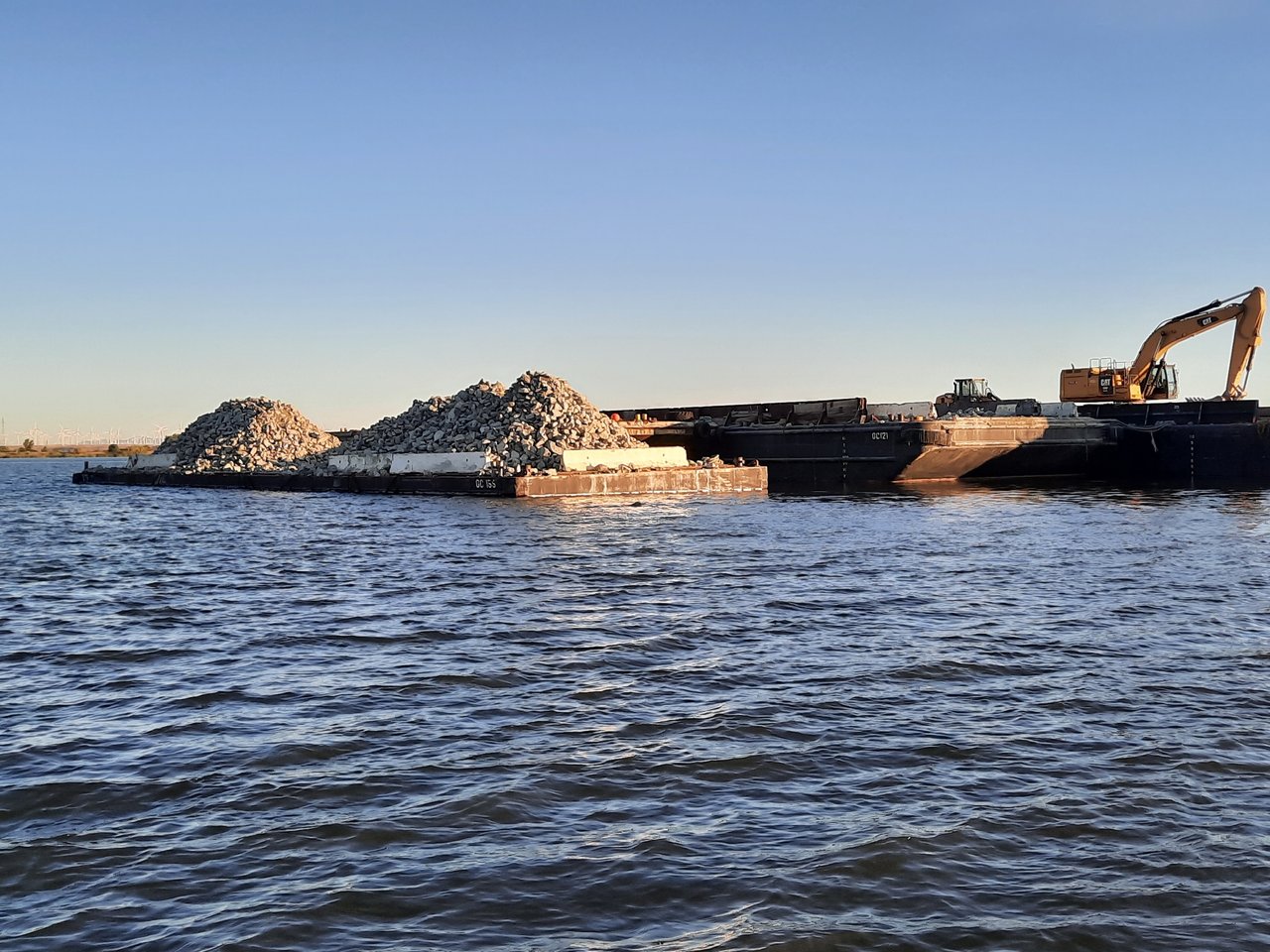ANTIOCH, Calif. (CN) --- Normally the cargo moving through the Sacramento-San Joaquin River Delta contains expensive commodities meant for ports all around the world, but in drought-riddled California the most indispensable freight is currently destined for the river bottom.
Tugboats pushing and pulling barges loaded with boulders have suddenly become key performers in the state’s battle with a rapidly expanding drought, delivering supplies needed to reinforce California’s buckling water system. Around the clock crews dump the expensive cargo into the river strategically, racing to block salty tidal flows from the water pumps that sustain billions of dollars worth of crops hundreds of miles away.
In the grand scheme, California water managers hope a $16 billion tunnel will save the West Coast’s largest estuary from decades of mismanagement and climate change. But for now, a $30 million pile of rocks will have to do.
Faced with the prospect of the main water source for millions of farmers and residents becoming unusable, California once again is manually turning the tide in the delta.
“Every single day the barrier is not installed, we can’t save the water we need in the upstream reservoirs,” said Jacob McQuirk with the California Department of Water Resources. “We realized we just weren’t going to be able to get through the drought without the barrier.”
The department’s barrier is a straightforward design taken straight from the playbook of a beaver.
Over the last month, heavy-machinery crews have been sinking basketball-sized boulders in 30-feet of water, slowly building a nearly 800-foot-wide crude dam across a delta channel close to the city of Antioch. The department is hoping to keep as much San Francisco Bay saltwater as it can out of the West False River and more importantly away from pumps used to operate the State Water Project and Central Valley Project further south.

An estimated 90,000 cubic yards of rock will be deposited across the channel, pulled from stockpiles in nearby Rio Vista and Stockton. Officials expect the project to be completed sometime this week and to have it removed by the end of November.
A similar scheme was hatched during the state’s previous drought in 2015, to the chagrin of environmental groups that claimed blocking the channel violated the Endangered Species Act. They argued in court the barrier would harm protected fish and increase salinity elsewhere in the delta, but a judge OK’d the plan.
The emergency action helped preserve salinity levels behind the dam and, fortunately for California, atmospheric rivers returned the following winters and mercifully ended the state’s historic drought --- or so it seemed.
Following consecutive dry winters, California’s water troubles are cascading again with an estimated 37 million people living with some level of drought.
Water levels in major reservoirs are dropping to record lows, wells are going dry in rural areas, hatchery salmon are being trucked out to sea due to scalding river temperatures and regulators are prepping water management plans that could kill nearly an entire run of endangered Chinook salmon this fall. And yet again, the delta is at risk of becoming too salty for humans.
Prior to the construction of major 20th century dams such as Shasta, Friant and Oroville, salty or brackish water was rarely an issue for most farmers and towns in the delta. Even in dry years, water from the five rivers that flow into the delta were able to slow the daily saltwater tides and “rinse or freshen” out the estuary.
California’s relationship with the delta dates to the end of the Gold Rush, when luckless miners and entrepreneurs transformed it from a major shipping route to an agricultural hotspot. Using mostly immigrant Chinese laborers, developers reclaimed delta marshes by building levees and dredging channels. Today there are over 1,000 miles of levees protecting delta islands and communities.











